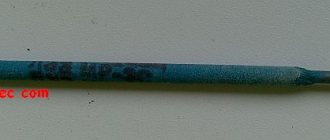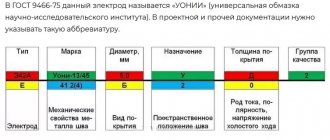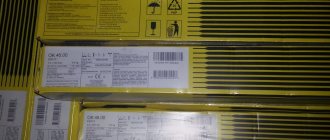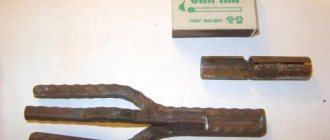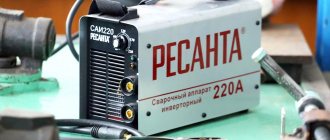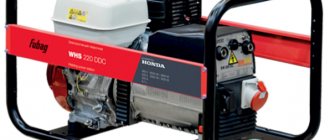Welding electrodes are a metal core around which a special coating is applied. Depending on the purpose, the composition of the rod and coating may differ to ensure a high-quality connection and welding process.
The coating of welding electrodes performs a protective function, covering the weld pool from oxidation by air. Thanks to this, the seam is strong, there are no cracks or defects in it.
There are several types of coating, but today we will talk about the features of welding electrodes with a basic coating.
Basic electrode coating - characteristics
Any electrode coating is a mixture of crushed components and a binder. The powder mixture is applied to a metal rod and serves to protect against various external factors.
The main coating is designated by the letter "B" . This mixture is produced from calcium and magnesium carbonates. These include elements such as marble, magnesite, dolomite. Fluorspar (CaF2) is also added to the listed minerals as a slag diluent. calcium fluoride coated electrodes .
Characteristics:
- The gas-protective environment that is formed during the welding process consists almost entirely of CO and CO2.
- The low hydrogen content allows the formation of strong seams without the risk of cracks .
- Low content of oxygen and various impurities (for example, sulfur and phosphorus) in the weld metal.
- In most cases, work should be carried out on direct current . The presence of plastic spar in the coating composition impairs the performance of alternating current electrodes. Therefore, most often a direct current of reverse polarity is needed.
What types of electrodes are there?
Electrodes applicable for manual arc welding are divided into consumable and non-consumable. Rods that melt during welding are made of cast iron, steel, copper or other metal, depending on the material. They play the role of an anode or cathode, and also act as a filler material. They can be covered or uncovered.
The coating in the melting rods performs many functions, from holding the arc to forming a gas cloud that prevents oxidation of the weld. Non-consumable electrodes for welding are made from various refractory materials - graphite, tungsten or coal. They serve to ignite and hold the arc, and filling the seam with additives is carried out using manual supply of fusible material.
Application
Basic coated electrodes are excellent for use in the following applications:
- welding of mild steels with high sulfur content;
- steels with a high content of sulfur, carbon, phosphorus;
- welding of hardening steels, in which cold cracks can form;
- when welding low-alloy and high-alloy steels, which are used under heavy loads and high temperatures;
- if you need to weld parts of large thickness;
- when welding rigid structures.
Other selection options
A few more parameters that determine the choice of electrodes for welding. One of the most important indicators is the polarity of the connection, and accordingly the type of current.
If an inverter is used for welding, then you need to understand that it produces direct current. Therefore, connecting the electrode for welding can be done according to two schemes.
- Polarity is straight. The diagram is as follows: minus is connected to the welding electrode, plus to ground.
- The polarity is reversed. Here it’s the other way around: minus to the mass, plus to the holder.
What are the features of each connection scheme? It all depends on the strength of welding of metals. With direct polarity, the metal parts being welded are subject to high heat. With reverse polarity, the heating temperature is not so high. Therefore, when you need to weld two metal sheets of small thickness, it is better to use reverse polarity, which will provide protection against burn-through. In addition, reverse polarity is used when welding products made from high-alloy steels. They are sensitive to high temperatures.
There are three more indicators that you need to pay attention to.
Welding thickness
The diameter of the electrode must be related to the thickness of the parts being welded. That is, these two parameters are interconnected. Here are some ratios.
| Diameter of welding material, mm | Thickness of welded parts, mm |
| 2,5 | 2 |
| 2,5-3 | 3 |
| 3,2-4 | 4-5 |
| 4-5 | 6-12 |
| 5 | 13 |
It is important to choose an electrode by diameter. The thing is that the higher this indicator, the worse the density of the seam, taking into account the ratios in the table. In addition, incorrect selection leads to instability of the welding arc, deterioration of penetration, and an increase in the width of the seam itself.
Another dependence of the diameter of the welding electrode. In this case, it depends on the current strength.
| Diameter of welding material, mm | Welding current strength, A |
| 2 | 55-65 |
| 2,5 | 65-80 |
| 3 | 70-130 |
| 4 | 130-160 |
| 5 | 180-210 |
| 6 | 210-240 |
It turns out that three parameters: current strength, thickness of the metals being welded and electrode diameters are interconnected. Therefore, when answering the question of which electrodes to choose, it is necessary to take this relationship into account. However, we note that the current strength in each category may differ slightly from those presented in the table. MR electrodes with a diameter of 2 mm can be welded at a current of 40 A. SSSI at 30 A. Therefore, before choosing electrodes, be sure to study their characteristics, which are indicated by the manufacturer on the packaging of the welding material.
Types of metals to be welded
Selecting welding materials for the required metals is not always easy, because by eye you can only determine steel, stainless steel, cast iron or non-ferrous metal. It is clear that in addition to steel structures where the electrodes described above are used, in all other cases special welding products are used: for cast iron, for stainless steel, for aluminum and so on.
As for steel products, there are certain difficulties depending on the definition of the type of steel. But if you figure this out, then the question of how to choose the right electrodes will become easier to answer.
- For welding boiling-type steels, you can use any grade with any coating. These steels include: low-carbon and slightly deoxidized.
- For welding semi-quiet steels, it is better to use electrodes with rutile or basic coating.
- For welding structures made of mild steel, which are subject to high dynamic loads, and which are operated at fairly low sub-zero temperatures, it is better to use grades with a basic coating.
The quality of the weld will also be affected by the stability of the arc. Therefore, the electrode you choose must match the type of current you are using. For welding consumables with a basic coating, only direct current is required; for other types, both direct and alternating current can be used. For electrodes with rutile, cellulose and acid coating, which operate from welding transformers, that is, on alternating current, the arc burns stably. This means the seam is of high quality.
As for the welding direction, cellulose-coated electrodes are welded well in the lower position and vertically. Because these electrodes produce a fairly viscous slag and plus the metal of the wire is transferred to the seam in small drops, which allows you to evenly fill the joint between the metal parts. In this regard, the worst weld seam is formed on electrodes with a basic coating.
When there is a question of welding thick-walled products, the technology determines the multilayer nature of the applied seam. Therefore, such a parameter as good slag separation becomes the main one when choosing electrodes. In this regard, electrodes with basic coating again lose out. Let us also add here that welding products of this type require a certain purity of the metals being welded.
Advantages and disadvantages
When comparing the basic coating of electrodes with other types, both advantages and disadvantages of this type can be identified.
The benefits include:
- High ductility and toughness.
- Low content of gases and various impurities in the weld metal.
- Resistant to hot cracking.
- High resistance to hydrogen sulfide cracking. Ideal for welding pipelines carrying hydrogen sulfide compounds.
- Reliably weld critical structures.
- It is convenient to make seams of any spatial position .
- Low oxidizing capacity. The process of deoxidation and alloying of metal is improved.
The disadvantages include:
- Increased sensitivity to moisture. Electrodes with such a coating should be stored in a dry place.
- The welding arc may burn unstable if alternating current is used.
- Lengthening the arc during welding often leads to the appearance of pores in the weld.
- If the coating is moistened, the hydrogen content in the deposited metal increases. This can also lead to the formation of pores.
- It is necessary to calcinate the electrodes immediately before welding , since the optimal level of coating humidity should be 0.3%.
- If there is rust on the surface of the structures being welded, this also often causes pores to appear in the seam.
[ads-pc-2][ads-mob-2]
How to apply the coating
As mentioned above, the thickness of the coating directly depends on the diameter of the rod itself. Various technologies can be used to apply such a coating. Coating is applied during their manufacture using special equipment. Such equipment operates in a fully automatic mode, which improves the quality of coating on electrodes. Solid elements in the composition of the coating can be ground and additionally applied to the viscous base of the coating. To ensure a single fraction of such solid components, they are sifted through special filters, and only after that they are applied to the surface of the surfacing material. In some cases, when applying the coating, the finished composition is pre-fired, which makes it possible to remove sulfur, which can deteriorate the quality of the welded joint. At the last stage of coating, the machine dips the rods into the prepared mixture, and at the end we get a uniform layer of coating.
The best electrodes with basic coating: brands
Kobelco LB-52U
They are produced at a subsidiary of the largest Japanese metallurgical concern Kobe Steel. Designed for welding critical structures made of steels with low carbon content. Widely used in cases where it is impossible to implement double-sided welding. Excellent for welding pipelines.
After welding with these electrodes, a minimal amount of residual slag remains.
The seam is uniform, has high ductility, there are no cracks or gaps. Learn more about LB-52U. IMPORTANT! The electrodes are highly sensitive to moisture. Before use, they must be calcined at temperatures up to 300°C. Otherwise, the electrode may burn poorly, and, accordingly, the quality of the seam will noticeably decrease.
OZL-8
Used when working with types of steel containing chromium and nickel. Provides a strong seam that is resistant to corrosion. Ideal for welding highly loaded components. When cooled, the seam retains its strength and does not crack. However, sudden cooling of the weld should not be allowed, as this promotes rapid crystallization and the formation of cracks.
Among the advantages of this brand:
- affordable price (compared to other electrodes of this class);
- ease of stitching.
SSSI 13/55
One of the best for welding critical structures. Best suited for working with carbon steel. Advantages:
- A special coating material, which when molten resembles resin, eliminates the possibility of the formation of slag ulcers . All slag is effectively removed from the seam.
- High strength seam , resistant to alternating loads.
FEATURES : The use of UUSI electrodes requires the welder to have some experience. Due to the nature of the coating, they are difficult to light. With a short break in work, the molten coating instantly “seizes” at the tip, so the electrode will have to be cleaned.
ESAB OK 61.30
Manufactured in Sweden (learn more about the manufacturer and its electrodes). Ideal for welding the following grades of stainless steel:
- 304L;
- 308L;
- 03X18H9;
- 06X18H11.
[ads-pc-4][ads-mob-4]
Additional types of electrodes
Consumables are divided into groups according to the method of operation.
Non-consumable electrodes
The products are designed for automatic and semi-automatic welding.
The following is supplied to the work area:
- protective gas (in most cases - argon);
- filler material.
Non-consumable electrodes are designed for automatic welding.
Refractory consumables do not have a coating.
They are made from the following materials:
- Tungsten. The metal is used in its pure form or with the addition of thorium, lanthanum, cerium, yttrium or zirconium. The type of additive is determined by color marking.
- Artificial pressed graphite.
- Electrical coal.
Non-melting consumables are used to cook:
- steel;
- cast iron;
- aluminum;
- copper;
- brass;
- bronze
When welding with a non-consumable electrode on direct current, the anode spot (on the “plus” side) has a higher temperature than the cathode spot.
Therefore, to connect thin-walled workpieces, reverse polarity is used: “+” is connected to the consumable. Otherwise, the metal will burn out.
Consumable electrodes
Products of this type are used in manual arc welding.
Consumable electrodes are used in manual arc welding.
During operation, the rod material is transferred to the weld pool.
Consumables are made from welding wire Sv-08 or Sv-08A.
The following types of steel are used (77 grades in total):
- carbon;
- alloyed;
- highly alloyed.
The product is selected in accordance with the material of the workpieces.
When welding with direct current, the cathode spot is hotter (on the “minus” side). Therefore, thin-walled workpieces are connected with direct polarity: “-” is connected to the consumable.
Electrodes made of non-ferrous metal
Such consumables are used for joining workpieces made of aluminum, copper, nickel, and other non-ferrous metals and their alloys. Select a rod from the same material as the parts to be welded.
The following brands are used:
- Aluminum - OZA-1 and OZA-2.
- Aluminum alloys - AF-4aKr and A-2.
- Copper, bronze, brass - MN-5, KM-100, AMNTs/LKZ-AB.
- Nickel and its alloys - KhN-1 or MZOK.
Non-ferrous metal electrodes are used for aluminum, copper, and nickel.
Electrodes for aluminum welding are made from Sv-A1 wire with a halide coating. They are suitable for all brands of metal.
Process parameters:
- D.C;
- reverse polarity;
- lower spatial position of the seam.
KM-100 consumables and similar ones are made of copper wire and equipped with a main coating (calcium fluoride). It is characterized by a reduced release of oxygen, which has a destructive effect on the metal. It is possible to combine copper with carbon steel.
Process parameters:
- D.C;
- reverse polarity;
- lower spatial position of the seam.
Electrodes for resistance welding are also made of copper or bronze.
Consumables of the MZOK brand and similar ones are made from nickel-copper wire with a basic type of coating.
Process parameters:
- D.C;
- direct and reverse polarity;
- any spatial position of the seam.
Welding with electrodes with basic coating
When using electrodes with a basic coating for welding, several nuances need to be taken into account:
- Do not extend the welding arc. In this case, the metal is saturated with nitrogen, which significantly reduces the strength of the weld. May cause cracks.
- The working surface must be completely dry. Otherwise, pores may form in the seam.
- Mandatory requirements for storing electrodes must be observed. Store only in a dry place at a temperature not lower than 15°C. Some manufacturers pack electrodes in vacuum packaging. This significantly extends their shelf life without the need for re-calcination.
From the history of coatings
The development of high-quality electrode coatings and their industrial development can be considered one of the largest scientific and technical achievements that played a huge role in the development of world technology. Despite the fact that the first patent for coating electrodes was received by the founder of ESAB, Oskar Kelberg, back in 1906, the production of coated electrodes in the USSR began only in the 30s of the 20th century. Initially, electrodes with a thin coating were used, which performed the only role of stabilizing the welding arc. It consisted of only two components - powdered chalk and liquid glass. Chalk provided ionization of the arc, and liquid glass, along with the ionization function, also played the role of a binding component.
Welding with an electrode with chalk coating, although it made it possible to weld metal in principle, did not provide protection for the molten pool from atmospheric gases. The seams made with such electrodes had a nitrogen content of 50 times, oxygen 5-10 times more than the base metal. At the same time, the carbon content in the deposited metal decreased by 4 times. All this made it possible to use chalk electrodes only for welding non-critical structures. The production of electrodes with multicomponent coatings, which, along with arc stabilization and protection of the weld pool from atmospheric gases, began in the USSR only in 1935.
Buying electrodes: how to determine quality
When purchasing this product, you should immediately pay attention to several points:
- expiration date (indicated on the packaging) - it should not be exceeded;
- quality of the coating - it should not crumble from the core, otherwise it has either been stored for a very long time or is a product with an initial manufacturing defect;
- In addition, the coating must be applied to the core evenly, with the same layer thickness.
In addition, you should immediately eliminate the risk of it becoming damp by placing the electrodes in special cases. If the latter does happen, the products can be dried or calcined at +400 °C.
Briefly about inverters
Today there are quite a large number of inverter welding machines.
Most manufacturers offer industrial and household inverters in various price categories. Industrial inverters are distinguished by greater power and increased duty cycle. Also one of the main differences is the maximum output welding current. As a rule, professional devices have higher maximum current values. Another difference may be the ability to connect not only to a 220 V household network, but also to a 380 Volt industrial network. Inverter welders are the most common type of welding machine on the mass market. Due to their versatility and relative compactness, they have practically replaced devices such as transformers and rectifiers. The ability of the inverter to produce direct and alternating current makes it truly universal. This is why all types of coated welding electrodes are suitable for inverter welding. And coupled with its small dimensions and high mobility, this type of equipment remains unrivaled.
What affects the quality of welding with an inverter
We have already told you which electrodes are best for welding with an inverter and are ready to move on to the factors that influence the quality of the weld.
- Welder skills and experience. This is the determining factor. An experienced and competent welder can always perform high-quality welding in compliance with all technologies. Please note that we wrote “skills and experience”, since there are types of industries in which welders perform monotonous work. For example, a welder who performs only horizontal welds in production will most likely not be able to perform high-quality vertical welds from top to bottom. In no case do we want to offend welders, but such cases have occurred in practice. It’s not for nothing that there is a special certification of welders at NAKS, the passage of which gives access to certain types of work.
- Quality of materials. This is the second determining factor. Electrodes for welding with an inverter must be of high quality. They must also be stored correctly and calcined before use according to the recommendations indicated on the packaging.
- Equipment quality. The inverter must be of high quality, capable of providing stable operation. A common problem with low-quality equipment is voltage surges, the inability to stabilize the arc, and sticking of the electrode.
We have listed three main factors that affect the quality of a welded joint. This also includes the correct selection of the diameter of the product, its brand, setting the current strength, the conditions under which the work is carried out, and much more.
